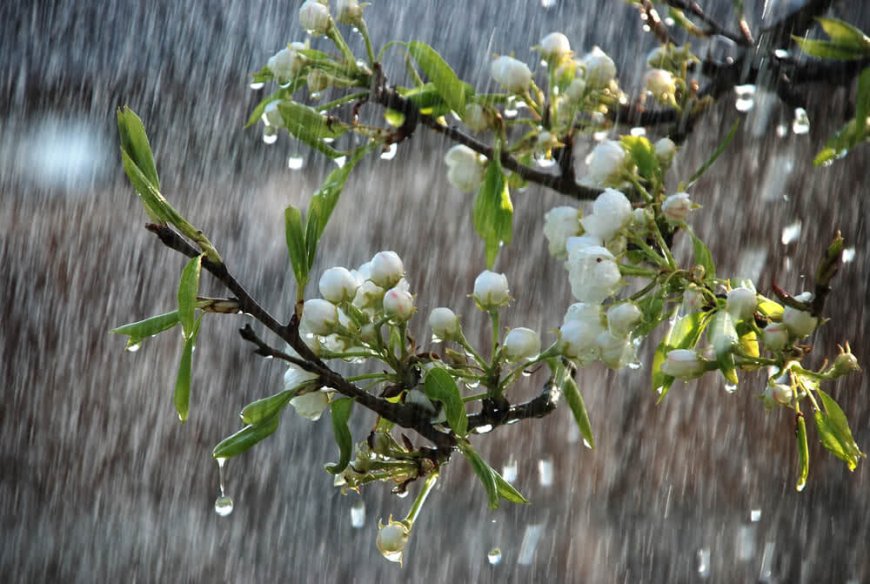Essential Rainy Season Gardening Tips for a Healthy and Thriving Garden
Discover essential rainy season gardening tips to protect your plants, prevent pests, and ensure a lush, thriving garden during the monsoons.

Essential Rainy Season Gardening Tips for a Healthy and Thriving Garden
The rainy season brings life and freshness to our gardens, but it also comes with its own set of challenges. While the rains reduce our dependence on watering, excess moisture, fungal infections, and poor drainage can affect plant health. With proper care and a few smart techniques, you can ensure your garden flourishes during the monsoons. Let’s explore some essential gardening tips specifically for the rainy season.
Choose the right plants for the season
The first step to successful gardening in the rainy season is selecting plants that thrive in humid, wet conditions. Some ideal choices include:
-
Tuberous plants like ginger, turmeric, and colocasia
-
Flowering plants such as hibiscus, jasmine, and balsam
-
Leafy vegetables like spinach, amaranthus, and fenugreek
-
Hardy herbs like mint, lemongrass, and coriander
These plants not only tolerate high moisture levels but also benefit from the natural rainwater, which is soft and nutrient-rich.
Ensure proper drainage in your garden
Excess water can damage the roots and lead to fungal growth or rot. Drainage is key during the monsoon. Follow these steps:
-
Raise your garden beds slightly above ground level.
-
Use well-draining soil mixed with sand or coco peat.
-
Regularly check and clear blocked drainage holes in pots.
-
Avoid overwatering; let rain do most of the work.
For container gardening, always use pots with drainage holes and consider adding a layer of gravel at the bottom to improve water flow.
Use mulch to retain nutrients and prevent weeds
Heavy rains can wash away topsoil and nutrients. Mulching helps retain soil health while suppressing weeds. You can use:
-
Dry leaves
-
Coconut husk
-
Bark chips
-
Straw or hay
Apply mulch around the base of plants to prevent soil erosion, maintain consistent temperature, and reduce fungal spread caused by soil splashing.
Prune and trim regularly to promote airflow
Increased humidity and dense foliage can invite pests and diseases. Pruning helps:
-
Improve air circulation between leaves
-
Remove dead or infected parts
-
Promote new, healthy growth
Focus on trimming back overgrown shrubs and removing yellowed leaves or soggy stems. Use sterilized pruning tools to avoid spreading infections.
Fertilize moderately and wisely
During the rainy season, plants might not need heavy feeding as the soil tends to retain nutrients better. However, rains can also leach nutrients in certain cases. Consider:
-
Using slow-release organic fertilizers like compost or vermicompost
-
Applying fertilizers during dry spells between rains
-
Avoiding chemical fertilizers that dissolve too quickly in wet soil
Balance is key — too much fertilizer can promote soft, disease-prone growth, while too little may lead to weak plants.
Keep an eye out for pests and fungal diseases
Moist environments attract a host of garden pests such as slugs, snails, and fungal infections. Take precautions:
-
Spray neem oil or natural insecticides as a preventive measure
-
Use wood ash or coffee grounds to deter slugs
-
Ensure proper plant spacing to avoid fungal spread
-
Remove infected leaves immediately and dispose of them away from the garden
Don’t wait for pests to appear — proactive care is always better than reactive treatment.
Support climbing and tall plantsRain and wind can easily damage tall or weak-stemmed plants. Use support methods like:
-
Bamboo sticks or wooden stakes
-
Trellises for creepers and vines
-
Tying plants loosely with jute or cloth strips
This prevents breakage, keeps plants upright, and improves exposure to light and air.
Harvest mature crops to prevent spoilage
Vegetables and fruits mature faster in the humid monsoon environment. It’s important to harvest them at the right time to:
-
Avoid overripening and rot
-
Reduce pest attraction
-
Encourage new growth and flowering
Regular harvesting not only protects your crop but also increases yield over the season.
Maintain cleanliness in your garden space
With wet soil and decaying plant matter, gardens can quickly become breeding grounds for disease. Keep the area tidy by:
-
Removing fallen leaves and debris
-
Cleaning tools after each use
-
Disinfecting pots and containers periodically
-
Checking for mold or fungus on surfaces
A clean garden is a healthy garden, especially when humidity levels are high.
Plan ahead with rainwater harvesting
Rain is a valuable resource. Collecting and storing rainwater during monsoon can help you during dry spells. You can:
-
Place barrels or large containers under drainpipes
-
Use covered containers to prevent mosquito breeding
-
Filter rainwater before use if needed
This eco-friendly practice ensures you have access to natural water for your garden even after the rains are over.
Conclusion
Gardening in the rainy season is both a joy and a responsibility. The natural abundance of water can bring out the best in your plants, but only with thoughtful care. From soil preparation and drainage to pest control and harvesting, every step counts in creating a lush and resilient garden during monsoon. Follow these tips, and let your green space thrive no matter how heavy the rain gets!
Bonus Gardening Tips for Rainy Season:
-
Water plants only when necessary, preferably in the morning.
-
Avoid stepping on wet garden beds to prevent soil compaction.
-
Plant marigolds — they naturally repel pests.
-
Make compost from fallen leaves and organic waste during the rainy season.

 Ellofacts
Ellofacts 





